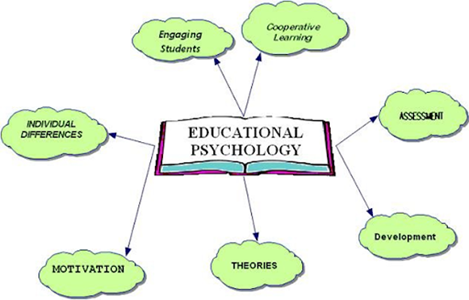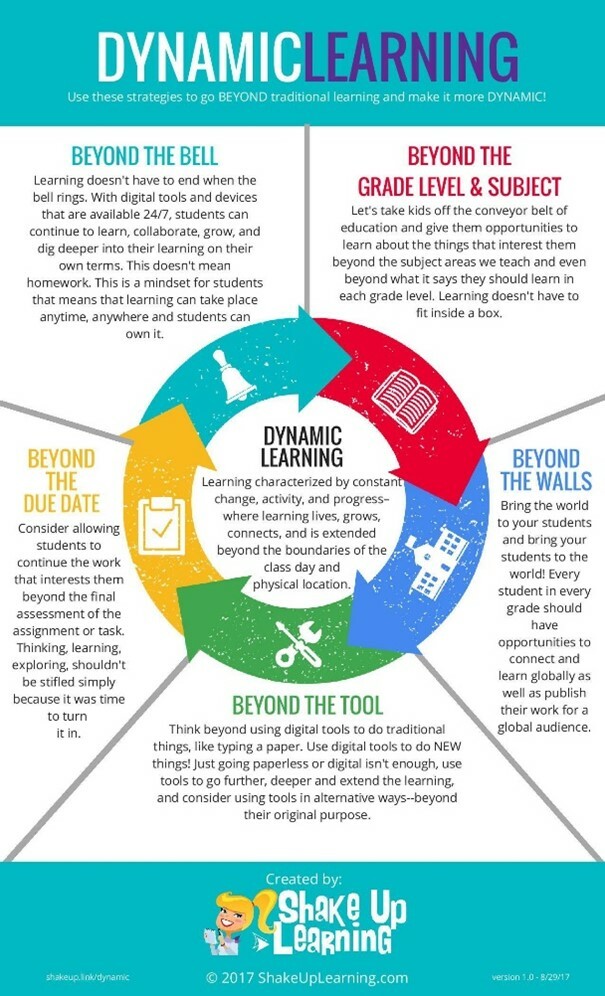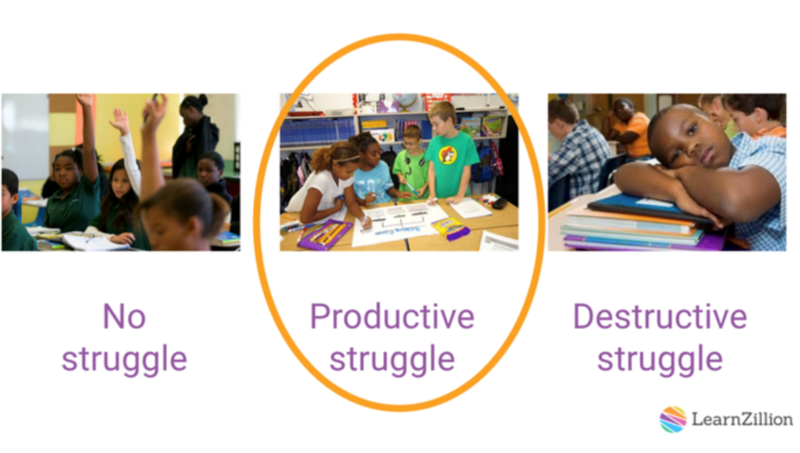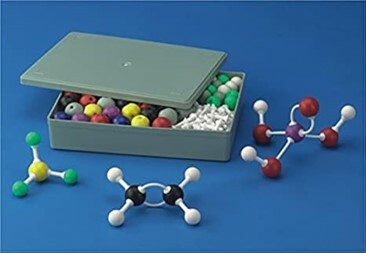Learning, Knowledge and Human Development MOOC’s Updates
Discussion Forum: Essential Update #4 - June 27, 2024: “Productive Struggle” through the Lens of Educational Psychology: Application in a Chemistry Class
Option #1:
Introduction: Educational Psychology
Not only does educational psychology give us insights about the process of learning through concepts like classical conditioning, biological cognitive readiness, socio-emotional effects but also the dynamics of learning.
Through such a dynamic view of learning, it foregrounds learning as an active process that evolves over time instead of a static and passive means of imbibement where cognitive processes (e.g., attention, memory, reasoning), emotional states (e.g., motivation, anxiety, interest), social interactions (e.g., peer learning, teacher-student realtionships), and environmental influences (e.g., classroom setting, cultural context) play an important role.
Learning, thus, goes through stages of initial struggle, breakthroughs, consolidation, and application. In such a scenario, learning is not restricted by the curriculum assigned for a particular grade, to the binds of a discipline (e.g. learning a mathematical concept can be aided by computer programming tools – as we saw in George Reese’s discussion – despite Maths and Computer classes being held in separate periods). Such a process of learning keeps the students engaged enough to continue learning a topic beyond the period bell and the confines of the school premises.
Exploring “Productive Struggle” through Educational Psychology
The one key component of dynamic learning is productive struggle discussed by George Reese. Informed by Lev Vygotsky’s Zone of Proximal Development and Scaffolding (Billings and Walqui), productive struggle ensures that learning always takes place in the space between what a learner can do without assistance and what they can do with minimal adult guidance or collaboration with their peers. Learning thus reframed as an end attained through the means of problem solving keeps the learners excited by breaking down knowledge into smaller digestible parts. The tasks are challenging but impossible; rather they are achievable with effort.
Under the auspices of productive struggle, mistakes are no longer sources of shame but a possibility cancelled out – a learning opportunity. This helps in instilling persistence and attention in the students – both of which is part of positive student development as discussed by Denice Hood.
Educational psychology offers valuable insights into the concept of productive struggle and its role in learning as follows:
1. Cognitive load theory: This theory, developed by John Sweller, explains how our working memory processes information. Educational psychology shows that productive struggle occurs when a task is challenging enough to engage higher-order thinking but not so difficult that it overwhelms cognitive resources. This sweet spot of difficulty encourages learners to construct new knowledge schemas, enhancing their understanding and problem-solving abilities.
2. Growth mindset: Carol Dweck's research on mindset has significant implications for productive struggle. Students with a growth mindset believe that abilities can be developed through effort and learning. This perspective helps them view struggles as opportunities for growth rather than indications of fixed limitations. Educational psychology demonstrates that fostering a growth mindset can lead to increased persistence in the face of challenges and better overall learning outcomes.
3. Metacognition: Productive struggle promotes metacognitive skills - the ability to think about one's own thinking processes. When students grapple with challenging concepts, they're forced to reflect on their understanding, identify gaps in their knowledge, and develop strategies to overcome obstacles. This self-awareness and self-regulation are crucial for deep learning and transfer of knowledge to new situations.
4. Motivation: Self-determination theory, a key concept in educational psychology, suggests that feeling competent and autonomous are fundamental psychological needs. Productive struggle, when appropriately scaffolded, can fulfill these needs. As students overcome challenges, they experience a sense of accomplishment that boosts their intrinsic motivation and self-efficacy, encouraging them to take on further challenges.
5. Long-term retention: The concept of desirable difficulties, introduced by Robert Bjork, suggests that introducing certain difficulties in learning can enhance long-term retention and transfer. Productive struggle creates these desirable difficulties, leading to more durable and flexible learning. This is related to the testing effect and spaced repetition, where effortful retrieval of information strengthens memory.
Application of Productive Struggle in a Chemistry Class
Let’s take the example of a Chemistry class where students are being introduced to the concept of atomic structures that, scholars have noted, is a topic students learn effectively through productive struggle (Yuriev et al. 2017). One only needs to take some time to jug one’s mind to remember how very unusual the idea was: this rectangular copy that I am writing on and the cylindrical pen I am using are all comprised of atoms? In fact, these atoms are all around floating about in our classroom and in fact doing all sorts of funny things inside our own bodies!
Productive Struggle comes quite handy in gradually exposing students to such an alien idea. For one, visual representation could be used wherein the teacher may draw simple diagrams on the board to explain, say, the basic Bohr mode. Thereafter, she might move on to drawing the electron cloud model which will make students grapple with reconciling these two different visual models.
Simultaneously, the teacher would be referring to parts of the model as “centre of the atom” or “nucleus containing protons and neutrons” wherein the students will have to struggle with connecting these verbal representations to the visual representations on the board, often resulting in metacognition or self-reflection on one’s learning process.
The teacher may thereafter bring out 3D ball and stick models where students would be encouraged to have a hands-on physical experience of constructing the atomic structure themselves, perhaps in groups to encourage a sense of collaboration.
Such progressive learning steps help the students develop abstract notions of the atomic structure based on the concrete experiences they were gradually introduced to in the classroom. In fact, studies show that struggle with multiple representations (here, visual, verbal, physical) help students develop deeper understanding of atomic structures (Corradi et al. 2015) and retain the concept for longer periods (Taber 2005).
Indeed, productive struggle is especially relevant in giving the students of flavour of learning one structure only to realize its flaws and thereby moving on to the next structural configuration, thereby inculcating in them skills of scientific problem recognition and a zeal for solving the same.
References
Billings, Elsa and Walqui, Aída. “Zone of Proximal Development: An Affirmative Perspective in Teaching ELLs” https://www.wested.org/resources/zone-of-proximal-development/#:~:text=The%20Zone%20of%20Proximal%20Development,collaboration%20with%20more%20capable%20peers.
Bjork, Elizabeth L. and Bjork, Robert. 2009. “Making Things Hard on Yourself, But in a Good Way: Creating Desirable Difficulties to Enhance Learning.” In Psychology and the Real World, 56-64. https://bjorklab.psych.ucla.edu/wp-content/uploads/sites/13/2016/04/EBjork_RBjork_2011.pdf
“Carol Dweck: A Summary of Growth and Fixed Mindsets.” https://fs.blog/carol-dweck-mindset/
Corradi, D., Elen, J., & Clarebout, G. 2012. “Understanding and Enhancing the Use of Multiple External Representations in Chemistry Education.” Journal of Chemical Education 89(12), 1541-1548. https://doi.org/10.1021/ed200808r
Taber, K. S. 2005. “Learning quanta: Barriers to stimulating transitions in student understanding of orbital ideas.” Science Education 89(1), 94-116. https://doi.org/10.1002/sce.20038
Williams, Dan. “The Importance of Cognitive Load Theory (CLT).” https://set.et-foundation.co.uk/resources/the-importance-of-cognitive-load-theory#:~:text=Cognitive%20Load%20Theory%20(CLT)%20%2D,learning%20(Sweller%2C%201988).
Yuriev, E., Naidu, S., Schembri, L. S., & Short, J. L. 2017. “Scaffolding the development of problem-solving skills in chemistry: guiding novice students out of dead ends and false starts.” Chemistry Education Research and Practice, 18(3), 486-504. https://doi.org/10.1039/C7RP00009J








Great
Yes. I agree that the Cognitive Load Theory (CLT), developed by John Sweller, is a framework that focuses on the cognitive processes involved in learning. According to CLT, our working memory is limited and can only process a finite amount of information at any given time. This theory is highly relevant in educational psychology as it provides insights into designing instructional materials that optimize learning by managing cognitive load.
Key Components of Cognitive Load Theory
Intrinsic Load: The inherent difficulty associated with a specific task or content. For instance, learning basic arithmetic has a lower intrinsic load compared to understanding advanced calculus. Intrinsic load is determined by the complexity of the material and the learner's prior knowledge.
Extraneous Load: This is the cognitive load imposed by the way information is presented to learners. Poorly designed instructional materials can increase extraneous load, making it harder for learners to process information. For example, using overly complex language or irrelevant images can distract and overwhelm learners.
Germane Load: This refers to the cognitive resources devoted to processing, constructing, and automating schemas (mental structures that help organize and interpret information). Effective instructional strategies aim to maximize germane load by encouraging meaningful learning and schema development.
Productive Struggle
Productive struggle is a concept in educational psychology that aligns with Cognitive Load Theory. It refers to the optimal level of challenge that promotes deep learning and cognitive development. When learners engage in productive struggle, they encounter tasks that require higher-order thinking, such as analysis, synthesis, and evaluation. These tasks should be challenging enough to stimulate cognitive engagement but not so difficult that they exceed the learner's cognitive capacity.
Sweet Spot of Difficulty
The sweet spot of difficulty is the balance between challenge and achievability. Tasks within this sweet spot encourage learners to:
Construct New Knowledge Schemas: When learners struggle productively, they are more likely to develop new schemas or refine existing ones. This helps in organizing and integrating new information into long-term memory.
Enhance Understanding: By working through challenging problems, learners deepen their understanding of the subject matter. This process involves critical thinking and problem-solving, which are essential for mastering complex concepts.
Improve Problem-Solving Abilities: Productive struggle helps learners develop resilience and adaptive problem-solving strategies. As they encounter and overcome obstacles, they build confidence and competence in handling similar challenges in the future.
Practical Implications for Instructional Design
Segmenting Information: Break down complex information into manageable chunks to prevent overwhelming the working memory.
Using Visuals Effectively: Incorporate diagrams, flowcharts, and other visual aids that complement the textual information and reduce extraneous load.
Scaffolding: Provide temporary support structures to assist learners in managing cognitive load. Gradually remove these supports as learners become more proficient.
Encouraging Active Learning: Design activities that require learners to actively engage with the material, such as problem-solving tasks, discussions, and hands-on projects.
By understanding and applying Cognitive Load Theory, educators can create learning environments that foster productive struggle, helping learners achieve a deeper and more enduring understanding of the content.